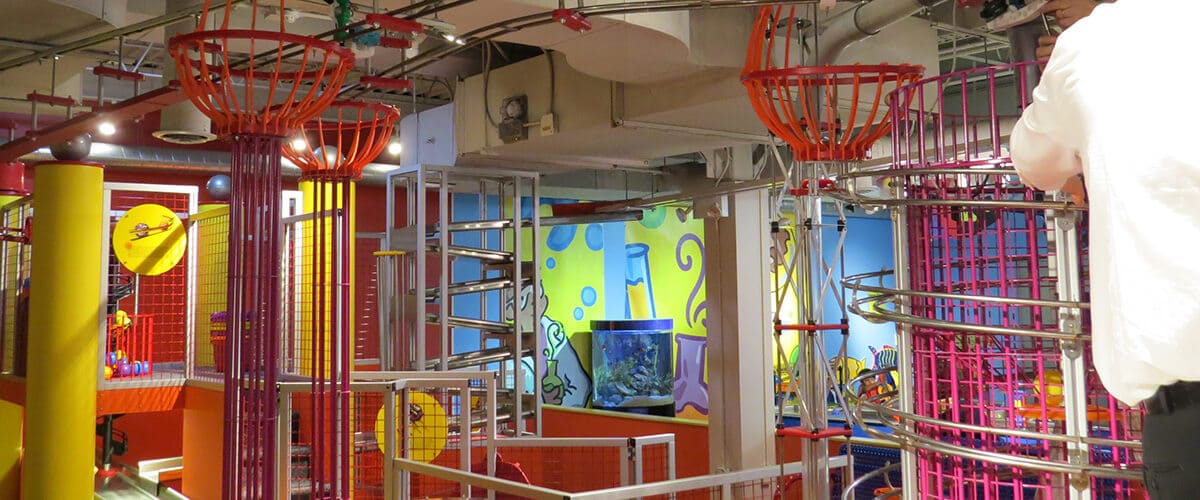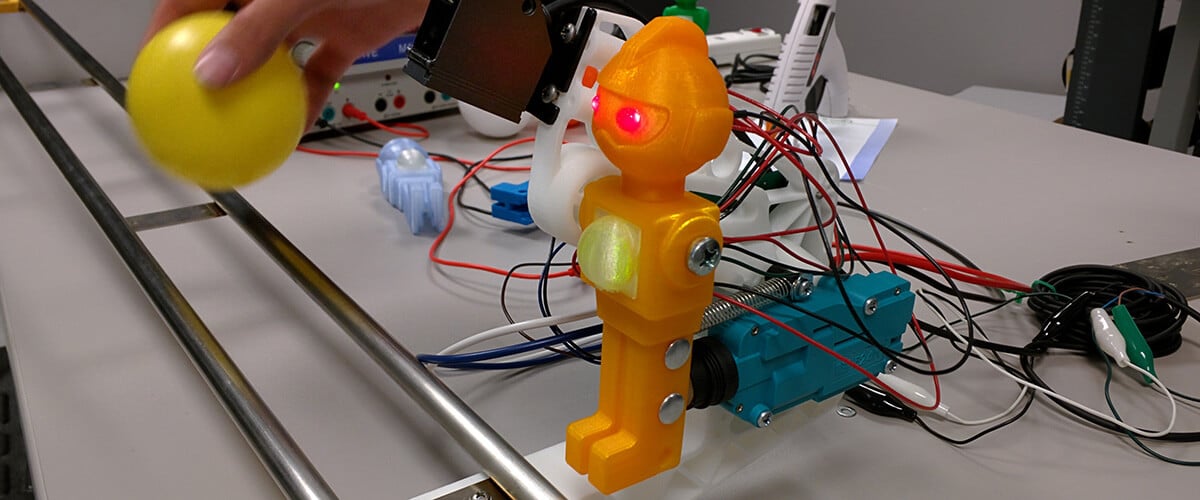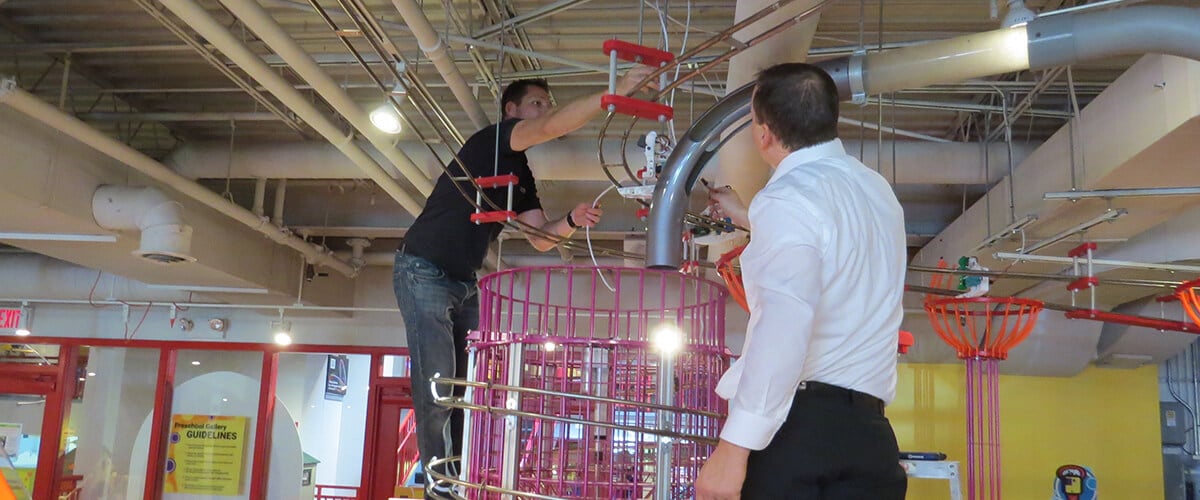Engineers On a Roll Exhibit Upgrade
February 10, 2016

Written By:
Kyle McLellan | Area Lead | Electronics


One exhibit in the museum is a Kinetic Ball display. Playpen balls get lifted up into the air via a conveyor belt, and then roll around a track back down to the ground. To create more interest, there are “kickers” stationed throughout the display. The kickers watch for balls to roll by, then randomly kick one ball off the track into a hopper, where it will then roll down a different track.
The kickers were originally made by using a ball return out of an indoor putting practice kit, coupled with an Arduino through a series of AC/DC relays. The kicker was placed on a bent sheet metal bracket cantilevered off the track.The museum was struggling with it from a reliability standpoint and were looking for a more robust solution. They also weren’t thrilled that the design utilized AC power to run the kickers, which meant that 120V wires were running up and down the exhibit (guarded as much as possible, but still posing a greater risk than the museum was happy with). That’s where Disher came in to help!


This stewardship project allowed the Ann Arbor team to rework the way the ball exhibit was orchestrated, while implementing a safer display. This, in turn, is helping the Hands-On Museum to continue to provide a fun experience for kids’ and families alike. Oh, and working on a colorful display involving robomen and playpen balls? A little fun for us, too.
Written By: Kyle McLellan – Product Development Engineer | Kyle is an electronics engineer with experience in analog and digital circuit design, embedded firmware development, and EMC testing. At Disher, he designs light engines, all types of sensors, and more. Outside of Disher, he is an avid runner and closet clock maker.
